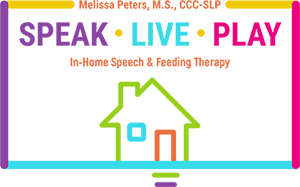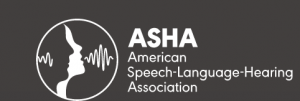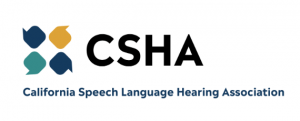Occupational Therapy for Kids
Occupational therapy can help kids who have trouble with everyday activities at home or school. It’s also important if your child’s behavior doesn’t match their age. For example, if they’re slower than other kids their age at doing things. Occupational therapy is like a special program that helps kids get better at all the things they need to do. It’s like a fun game where they learn new skills! Sometimes, kids also need speech therapy to help them with talking. Occupational therapy and speech therapy are both really helpful for kids who need a little extra support.
Occupational Therapists, or OTs, help kids with many different issues related to behavior and development. They focus on things like how well children can pay attention, how they process information through their senses, the things they do every day (also known as activities of daily living or ADLs), how they see and understand things, and how well they can use their small and big muscles. It’s like they are superheroes who work with kids to help them grow and become stronger!
One important thing to mention is that OTs are different from Speech Therapists, who work with kids on their speech and language skills. Both types of therapy are super helpful for kids and can make a big difference in their lives!
So, you never hear someone talking about Occupational Therapy or Speech Therapy. In that case, you’ll know that they are talking about some amazing ways to help kids learn, grow, and have fun!
What are Sensory Processing Issues?
Children with sensory processing issues struggle to put together information from their senses. Our bodies receive input from seven senses: sight, sound, smell, taste, touch, body awareness, and movement. These senses help us understand and interact with the world around us. When a child has difficulty with this, speech therapy and occupational therapy can be helpful. These therapies provide support and strategies to improve how the senses work together. So, if you or someone you know is dealing with sensory processing issues, speech therapy and occupational therapy can make a big difference!
Children who struggle to regulate sensory input often fall into two categories: those who are hypersensitive (excessively sensitive to stimuli) and those who are hypersensitive (insufficiently sensitive).
Hypersensitive kids can have strong reactions to things like light, sound, taste, touch, and smell. This means that these things can make them feel overwhelmed and want to be alone. They might not want to play with others at the gym, during recess, or even at lunch because it makes them really anxious. It can also be hard for them to pay attention and join in during class because even the buzzing of the lights can be distracting.
Sometimes, speech therapy and occupational therapy can help these kids feel better and learn how to cope with these feelings. These therapies can help them find ways to manage their reactions and feel more comfortable in different situations.
Children with hypersensitivity may exhibit compensatory overactive behavior to make up for the lack of sensory stimulation. As a result, they may frequently bump into others, exhibit restless movements, collide with objects, and create noise. Conversely, an under-sensitive child (also hypersensitive) may be perceived as disruptive as they consistently seek sensory stimulation. Unfortunately, these children are sometimes misdiagnosed with ADHD due to their disruptive behavior.
Enhancing Sensory Skills in Children: The Impact of Occupational Therapy
When an occupational therapist works with kids who are hypersensitive or hypersensitive, they use different approaches. For a child who gets overstimulated easily, the therapist might suggest using separate rooms for sitting and testing. This helps control the stimuli and prevents sensory overload. It’s like having a special space where everything feels just right for you! Occupational therapy and speech therapy are important for helping kids with these challenges. So, by using these therapies, we can make sure kids feel comfortable and happy in their environment.
Occupational therapists suggest engaging in sensory activities, such as swinging, jumping on trampolines, and crashing into beanbags in places like gyms to help children who are under-sensitive. In school, they may also recommend taking short breaks for sensory input, like walking, stretching, or doing light exercises like jumping jacks. These activities can be super fun and help children feel better! It’s like giving their bodies a special kind of workout. This is all part of speech therapy and occupational therapy, which are important for kids. Let’s keep exploring and learning more about how our bodies work!
Fidgets and jewelry can prove advantageous for hypersensitive children. For instance, chewable pencil tops are among the products that aid in soothing their nerves and redirecting their attention to the present task.
Even though it’s controversial, giving the skin a brush and doing joint compressions can help calm down hypersensitive kiddos. These actions are believed to “rewire” the brain, helping children handle sensory stimulation better.
It might not be easy to decide whether a child is hypersensitive or hypersensitive. According to experts, children who excel in certain circumstances but face difficulties in others may exhibit indications of a sensory processing disorder.
How Occupational Therapy Helps Kids with Motor Skills
Motor skills can be split into two categories: fine motor skills and gross motor skills. One focuses on the big muscle groups and can impact balance and coordination. The other is all about strength and agility, especially in the hands.
Fine Motor Skills
Children who grapple with deficient fine motor skills often encounter difficulties when it comes to manipulating writing instruments, engaging in intricate tasks such as stringing beads and utilizing scissors. These limitations can hinder their ability to participate in basic academic activities, making even the simple act of turning a page a daunting task.
However, fine motor skills are not only crucial in a child’s academic life but also in everyday activities. From using cutlery to buttoning shirts and zipping pants or bags, these skills play a vital role.
Occupational therapists (OTs) employ various engaging methods to help children develop and refine their fine motor skills. For example, they may use dot-to-dot painting activities to enhance a child’s pincer grasp, which in turn improves their ability to handle pens, pencils, and utensils. Other activities, such as picking up coins with one hand or practicing shoe lacing, not only teach children to manipulate small objects effectively but also enhance their visual focus.
Including board games such as Operation can greatly contribute to the development of fine motor skills, particularly in preschoolers. By using tweezers, children can refine their pincer grasp and achieve a steadier hold. Additionally, OTs may utilize Thera putty with varying resistance levels to help children build finger strength and enhance hand dexterity.
Overall, the journey of developing fine motor skills is vital for children. With the guidance of OTs, they can overcome these challenges and unlock their full potential.
Gross Motor Skills
When a child’s gross motor skills are not developed adequately, it can significantly affect their movement, balance, strength, coordination, and endurance. These fundamental abilities directly impact their capacity to walk, run, jump, hop, throw, and catch objects. Furthermore, it can hinder their participation in recess and after-school sports, potentially causing a gradual decline in self-esteem. Ultimately, it may impede their overall progress and development.
If children are unable to participate in the same activities as their friends, they may become withdrawn. Occupational Therapists (OTs) have effective strategies to address this issue. One approach is to introduce different sizes of balls for throwing and catching, helping children adapt and still enjoy the experience. Additionally, OTs may suggest obstacle courses, which significantly enhance balance and coordination.
To boost strength and endurance, OTs might hook you up with a tricycle. Sometimes, OTs team up with physiotherapists since both professions share techniques vital for developing gross motor skills. OTs also take on challenges like weak muscles and lack of core strength, which can mess with a kid’s ability to sit up straight. Good posture not only helps you participate better in class but also amps up your focus and alertness. OTs throw in therapy balls, curls, and crab walking to strengthen your core and keep you going strong.
How Occupational Therapists Teach Kids Self-Reliance (Self-Help Skills)
Acquiring self-help skills necessitates the mastery of fine motor skills, as these abilities play a vital role in fostering children’s self-reliance. For instance, mastering tasks such as buttoning and zipping clothes, as well as tying shoelaces, empowers children to dress and undress independently.
Grooming encompasses various skills such as hair brushing or combing, teeth brushing, and toilet usage. Similarly, eating entails the development of motor skills as children learn to hold and manipulate utensils. An occupational therapist employs diverse techniques to assist children in practicing and mastering these fundamental yet crucial abilities.
Coping with sensory processing issues adds complexity to a child’s challenges. Teaching self-help skills, such as managing discomfort with wetness or restrictive clothing, may require additional therapy.
For some children, having anything in their mouth can be a significant challenge, hindering the development and refinement of their daily activities. However, some strategies can help alleviate the difficulties they face. For instance, choosing to shop during off-peak hours might be more suitable for a hypersensitive child, while switching to a different toothpaste could help reduce their aversion to brushing their teeth. By implementing these approaches, we can make these processes more manageable for the child while still achieving the desired outcomes.
Acquiring self-help skills necessitates time and patience. Nevertheless, it is vital to recognize the significance of providing assistance to your child when they encounter difficulties with fundamental activities like dressing, grooming, and eating.
Where Can You Find an OT for Kids?
In most cases, occupational therapists for kids (OTs) are commonly found in schools, where they play a vital role both inside and outside the classroom. Inside the classroom, they diligently observe and collaborate with children to create a nurturing environment that supports their learning journey. They address sensory and motor challenges, ensuring that these difficulties do not hinder the children’s overall educational experience. By working closely with students, these dedicated professionals help optimize the learning environment and promote the holistic development of young minds.
Frequently, the child may be invited for a dedicated one-on-one session outside the classroom, especially for refining fine and gross motor skills, as well as visiting a sensory gym. This personalized approach ensures comprehensive development while fostering an enriching environment.
Indeed, numerous occupational therapists (OTs) offer therapeutic services within specialized sensory gyms, exclusively tailored to meet the needs of children aged three and above. These dedicated spaces offer a wide range of therapeutic tools and equipment to facilitate sensory integration and enhance developmental skills. However, it’s important to note that for children under the age of three, home-based therapy is typically recommended to ensure a comfortable and familiar environment for their therapeutic sessions.



